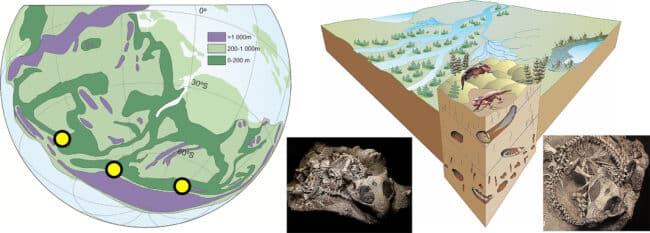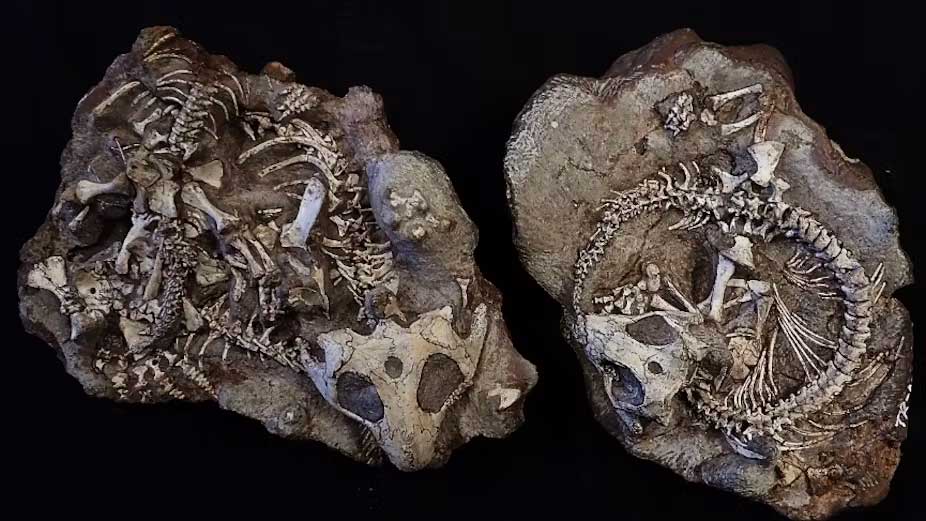The lizard had a short neck, an elongated body and tail and was about half a meter in length. It was similar in size to a juvenile monitor lizard.
Researchers have discovered what they describe as a burrowing reptile species that lived 250 million years ago, communally in “complex, underground burrows.” The lizards, Procolophon trigoniceps, were discovered in what is now central Karoo, South Africa. Researcher Roger Malcolm Harris Smith, University of the Witwatersrand notes in a paper in The Conversation that the reptile lived and died in the underground burrows.
The lizard had a short neck, an elongated body and tail and was about half a meter in length. It was similar in size to a juvenile monitor lizard. It featured a flat skull and horns that pointed toward the back. The teeth, the researchers say, were designed to crush plants and perhaps crayfish. While fossils of this species were first discovered in 1876, this marks the first instance where the researchers found a grouping of these lizards at varying stages of their lives in bone on bone contact. The researchers say that because they were found grouped together, the lizards died while huddling together, in an effort to stabilize their body temperatures. Finding the lizards in the same burrows shows conclusively that they lived together and died together.

“The taphonomic evidence supports previous suggestions that P. trigoniceps was a group-living, possibly communal, fossorial reptile analogous in its life habits to Gopherus agassizii, an extant North American desert tortoise.” Graphical illustration University of the Witwatersrand
The researchers say that prior to this finding, the notion that animals congregated together underground began with mammals. They note that this lizard species lived 20 million years before the first mammals.
Philippine Burrowing Snake Species Discovered In University Collection
“For the past three years, I’ve headed a research team that used neutron tomography – similar to X-rays – to look into rock and produce 3D images of the Procolophon skeletons inside,” Harris Smith said in his article. “We were amazed to be able to clearly identify an adult Procolophon skeleton lying curled up on the bottom of a large space or chamber at the end of the burrow with the scattered bones of a juvenile lying on top.”
“Our research found that these ancient reptiles used their front limbs to dig tunnels approximately one metre below the surface and then carve out chambers where they lived together. We now know for the first time that the reason we find Procolophon trigoniceps fossils in batches is that sand and mud from flash floods sometimes filled their burrows, burying them while they hibernated. This is how, today, in the rock outcrops of the central Karoo region of South Africa, we’ve been able to find some of these ancient colonies spectacularly fossilised with their occupants still intact.”
An abstract of the research paper, “Skeletal accumulations of the parareptile Procolophon trigoniceps reflect fossorial response to Early Triassic climatic instability across southern Gondwana” can be read on the ScienceDirect website.



